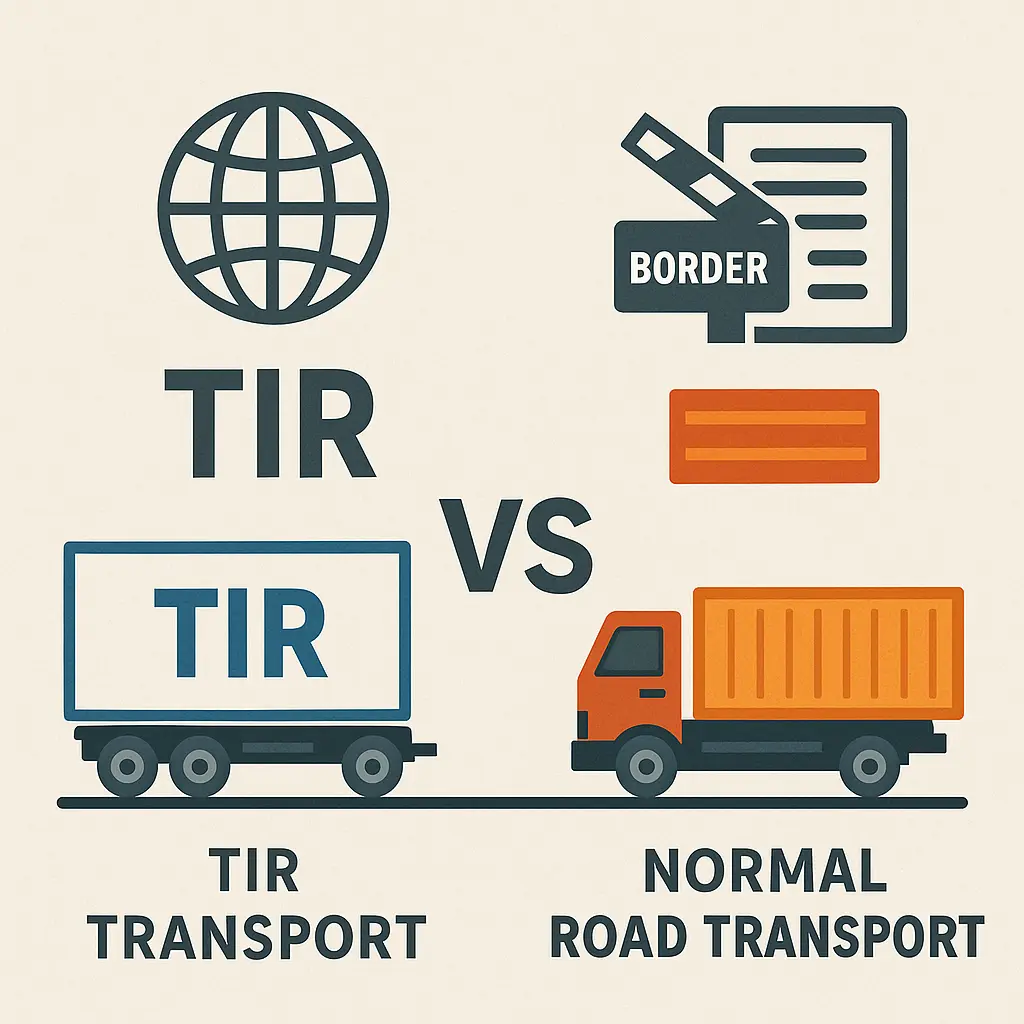In the vast world of logistics and cross-border commerce, road transport plays a pivotal role in moving goods efficiently. But not all road transport is the same. Two key types are Transports Internationaux Routiers (TIR) and normal (or domestic) road transport. Understanding the difference between them is essential for businesses engaged in international trade.

What is TIR?
Transports Internationaux Routiers (TIR) is an international customs transit system governed by the TIR Convention, established under the United Nations Economic Commission for Europe (UNECE). The TIR system allows goods to transit through multiple countries in sealed containers or vehicles, without undergoing customs checks at each border.
Key Features of TIR
- Customs Security: Goods are sealed and only checked at the start and end points, not at every border.
- TIR Carnet: This is an internationally recognized customs document that ensures duties and taxes are covered if goods go missing or are tampered with during transit.
- Multi-country Transit: Goods can pass through numerous countries under a single TIR Carnet, which simplifies bureaucracy and reduces costs.
Global Acceptance: TIR is recognized in over 60 countries including EU member states, Pakistan, China, Turkey, Iran, and Russia.
What is Normal Road Transport?
Normal road transport refers to the domestic or cross-border transport of goods without the use of an international customs transit system like TIR. This includes:
- In-country deliveries
- Cross-border shipments that require customs clearance at each border
- Unsealed cargo with full inspection rights at each checkpoint.
TIR vs. Normal Road Transport: A Quick Comparison
Feature | TIR Transport | Normal Road Transport |
Customs Checks | At start and final destination only | At every border |
Efficiency | High (faster transit) | Medium to Low (delays at borders) |
Documentation | TIR Carnet | Separate documents for each country |
Security | Sealed vehicles/containers | May or may not be sealed |
Cost of Delays | Lower | Higher due to time lost at checkpoints |
Ideal For | Multinational logistics & trade | Domestic or short international routes |
When Should You Use TIR?
Businesses should consider using TIR when:
- They are shipping goods through multiple countries.
- Time and border efficiency are crucial.
- They want reduced customs procedures and associated costs.
They deal with sensitive or high-value cargo needing enhanced security.
Challenges with TIR
While TIR offers many benefits, it also requires:
- Authorized status: Only licensed transporters and forwarders can operate under TIR.
- Training and compliance: Transport companies must follow strict TIR regulations.
- Availability: Not all borders or routes may be TIR-enabled, especially in conflict zones or remote regions.
Conclusion
TIR is a game-changer for international logistics, offering streamlined customs clearance, reduced costs, and faster transit. However, for local or simpler cross-border operations, normal road transport remains reliable and cost-effective. If your business is expanding globally, understanding when and how to use the TIR system can significantly enhance your supply chain efficiency. It’s not just about moving goods — it’s about moving smart.
